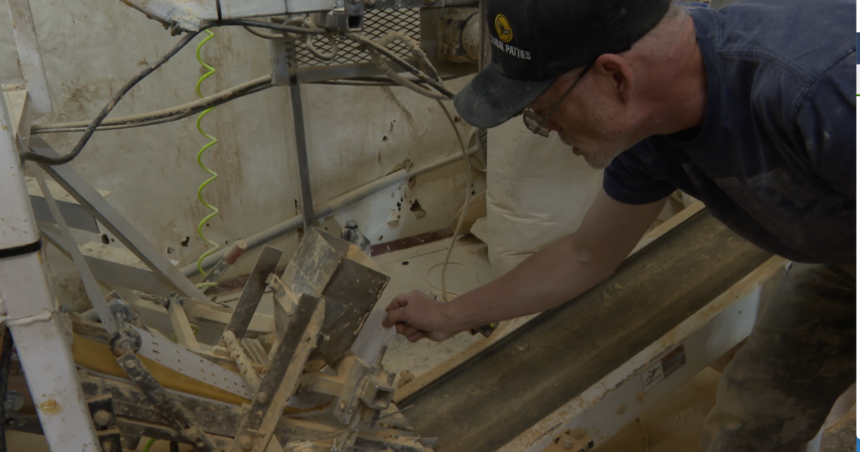BUTTE — It’s finally springtime and while it’s still early here in Montana, you might notice the beloved honeybee returning to your garden after the long, cold winter.
But how did this tiny, but mighty insect survive that long, cold winter?
If the bee was raised in an apiary by a beekeeper, the answer is that it likely gobbled up a couple of pollen patties, and chances are that bee food was produced in Butte, Montana.
“Bees are the most common pollinator of plants and vegetables and we need to have them pollinating so plants will continue to thrive and grow,” says Shay Clairmont, the plant manager for Global Patties.
Global Patties is a family-owned business that creates pollen supplements for honeybees kept by commercial and hobby beekeepers across the United States.
Together with their plant in Alberta, Canada, the pollen supplements are keeping bees across North America well-fed.
“Natural pollen is only available for a limited time of year so you want to get the bees ready for the natural pollen season and then keep working ‘em throughout the season,” says Clairmont.
On a recent visit to the factory located on the edge of town in the industrial park, hundreds of boxes filled with 30 pounds of individual patties are stacked on pallets ready to be loaded on trucks that will carry the bee food south to California or east to New York.
Clairmont says the owners of Global Patties started the Butte factory in 2007 to make it easier to ship the product within the United States.
The Global Patties factory in Butte produces an average of three million pounds of pollen patties made with a simple combination of natural pollen, sugar, brewer’s yeast and soy flower, and water.
Global Patties can also add additional supplements upon request and they are developing a dry formula that will keep longer for beekeepers who prefer to make their own bee food.
The pollen patties help beekeepers build robust colonies that pollinate orchards like almond trees in New Mexico or peach trees in Washington state and various crops across Montana among other locations across the nation.
According to the Montana Department of Agriculture, Montana typically ranks in the top five states for honey production in the United States and the work bees do to pollinate crops is immensely important in a state where agriculture is a top industry.
“When you’re a hobbyist or commercial beekeeper you’re trying to extend the season a little bit so you can get more honey production and then towards the end of the season when it’s getting colder and you might not be looking so much to make honey but you’ve got to feed (the bees) and get them ready for the wintertime so they can survive,” says Clairmont.





